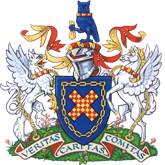HISTORY OF TAX 18 FEBRUARY 2025
GLASS TAX MAGNIFIED – CARRIE DE SILVA
On 18 February the Worshipful Company of Tax Advisers was delighted to welcome not only Carrie de Silva, one of our Liverymen, to give a presentation on glass tax, but also members of the Worshipful Companies of Glaziers and Glass Sellers.
Most of us are familiar with window tax, but glass tax is perhaps less well known. Carrie’s talk was fascinating, combining a history of glass tax with a clear explanation of the manufacturing process, and the origins of some of the well known glass manufacturers that we know today. Indeed, Carrie was inspired to explore glass tax after hearing a presentation on the history of Pilkington.
Glass tax was in force between 1746 and 1845 and was a consequence of war, as it was first imposed by the National Debt Act 1745 introduced during the War of Austrian Succession. And like other taxes raised during periods of conflict, it survived the peace. However, it was not the first time that glass had been taxed in England, as a levy on glass had been introduced under both Cromwell, and William and Mary.
Initially the tax was levied on raw materials, but later it was imposed on finished products, and Carrie illustrated the unintended consequences that the tax had on both the industry and the use of glass. Possibly the most significant impact (although this may have been overstated by some commentators) was the chilling effect that the tax had on innovation. Due to the requirements of excise officials present during the manufacturing process, developments in colouring glass were impacted significantly, as the officials’ requirements for the process to be stopped was not compatible with the colouring proess. At the time glass was sold by weight and decoration was untaxed value added to items, so manufacturers responded to the tax by producing smaller items, for example small decorated items such as glasses with hollow stems (known as “excise glasses”).
Carrie also gave an insight into the development of the Irish glass industry. Following the introduction of the tax some English businesses moved to Ireland where there was no tax, at least until 1800. It was the introduction of the tax in Ireland from 1800 that drove a number of smaller glass manufacturers out of business, with Waterford being one survivor – although it is by no means certain that at the time Waterford was producing higher quality glass than that produced in England.
Following the repeal of what was described as an “objectionable” duty in 1845, there was a revival of the glass making industry, wider use of glass, including for the Great Exhibition and also for roofs of railway stations, and greater use of sheet glass (which had had a fiscal disadvantage over the alternative crown glass).
Carrie gave a clear and informative talk and we hope that she will return to give a future History of Tax talk.
The next History of Tax event is on 14 October 2025, and is “The origins of the CGT exemption for the house” by David Collison.
